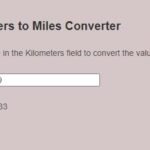What is the difference between speed and velocity?

Speed and velocity are two terms that are often used interchangeably in everyday conversation, but in physics, they have distinct meanings. Both speed and velocity describe how fast an object is moving, but they differ in one important aspect: velocity also includes direction.
Speed is a scalar quantity that represents the rate at which an object is moving, regardless of its direction. It is defined as the distance traveled per unit time, usually measured in meters per second (m/s), miles per hour (mph), or kilometers per hour (km/h). For example, if a car travels 100 kilometers in 2 hours, its speed is 50 km/h.
Velocity, on the other hand, is a vector quantity that represents the rate at which an object is moving in a particular direction. It is defined as the displacement of an object per unit time, usually measured in meters per second (m/s), miles per hour (mph), or kilometers per hour (km/h). For example, if a car travels 100 kilometers in 2 hours, but its final position is 50 kilometers to the north of its initial position, its velocity is 25 km/h to the north.
To further illustrate the difference between speed and velocity, let’s consider the example of a ball thrown straight up into the air. As the ball rises and falls, its speed changes, but its velocity changes direction as well. At the highest point of its trajectory, the ball has a velocity of zero, but its speed is still nonzero.
In summary, while both speed and velocity describe how fast an object is moving, velocity also includes information about the direction of motion. Speed is a scalar quantity, while velocity is a vector quantity. Understanding the difference between these two concepts is important in physics, as well as in many other fields such as engineering and sports.







Pingback: Understanding Acceleration: Definition, Formula, and Examples - StudySaga.in